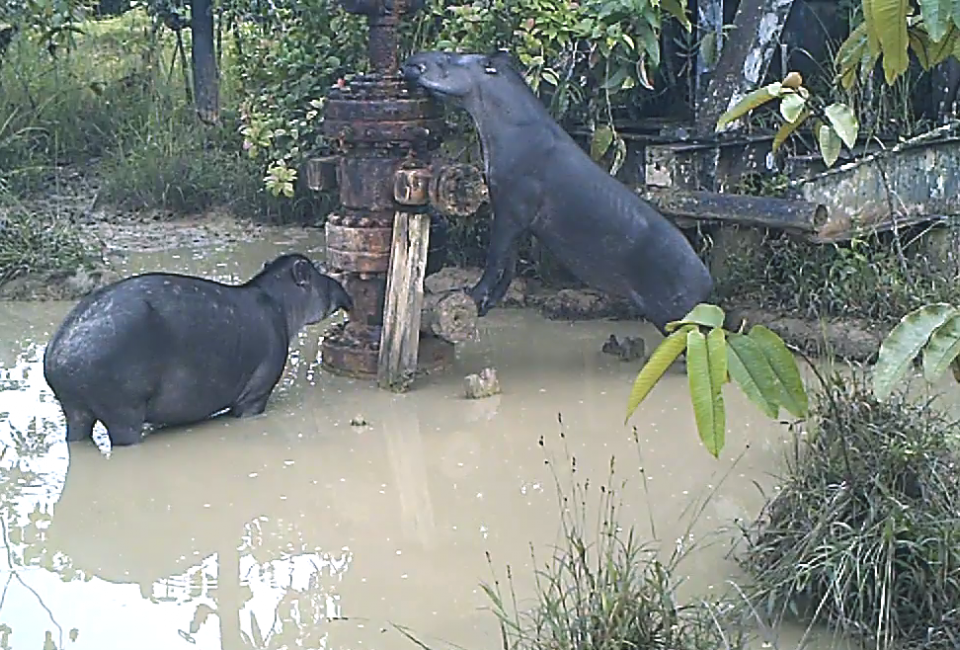
High concentrations of lead found in wildlife in Amazonia
Researchers at University of Vic - Central University of Catalonia (UVic-UCC) and the Autonomous University of Barcelona (UAB) have identified high levels of lead concentrations in samples of wildlife from Amazonia in Peru, caused by lead ammunition and pollution related to oil drilling. The research was published this week in the journal Nature Sustainability.
The highest concentrations of lead, the world's most widespread cumulative neurotoxic metal, are found in the most industrialised countries and regions on the planet. For this reason, it was assumed that in Amazonia, the world's largest and most diverse tropical rain forest, the levels of urban and industrial pollutants were low due to the area’s isolated location and the limited human impact it has received.
A team of researchers from University of Vic - Central University of Catalonia (UVic-UCC), the Institute of Environmental Science and Technology (ICTA-UAB) abd the Department of Animal Health and Anatomy of the Autonomous University of Barcelona has evaluated concentrations of lead and its isotopic signature in wildlife in remote areas of Amazonia in Peru for the first time. To do so, they collected liver samples from 315 wild animals from 18 different species, which local indigenous peoples (Quichua, Achuar and Yagua) hunted for their own consumption. The areas of study are very isolated, and reaching them entails a boat journey along local rivers lasting about four or five days. Some of these areas are in the country's second most productive oil concession, which has been operational since the 1970s.
The research found high concentrations of lead in livers from Amazonian mammals and birds - animals that are consumed every day by the local indigenous population. The levels of lead recorded are higher than those in wild animals in industrialised countries. The presence of unexpectedly high levels of lead in Amazonian wildlife is a health hazard for the local indigenous population, which depends on hunting for subsistence.
Half of the samples analysed contained over 0.5 milligrams per kilogram, which European legislation establishes as the threshold for the human consumption of animal offal, and 91% of the samples were above 0.1 milligrams per kilogram, which is the level below which meat in general is considered fit for consumption. This is a very significant risk for the population, as almost thirty of the samples analysed contained much higher lead concentrations.
The researchers also showed that the main sources of lead are the widespread use of ammunition made from the material, as well as pollution related to oil drilling. In fact, pollution from lead ammunition may be an underestimated problem on a continental scale in South America, since these results suggest that lead has entered the food chain in areas of Amazonia where the human population depends on hunting for subsistence, and rather than being restricted to the study area, this problem is likely to be applicable to indigenous populations that use lead ammunition all over the world.
Furthermore, finding lead related to hydrocarbon extraction in wildlife suggests that other poisonous petroglyceric components may also have entered the food chain. Indeed, in Peru's northern Amazonia, oil drilling has had a significant environmental impact due to the operational dumping of lead-rich residues in the environment.
Because of the planet's indigenous peoples' dependence on subsistence hunting, the widespread use of lead ammunition and the expansion of oil drilling in tropical rainforests (30% of tropical forests are located on oil and gas reserves), these results highlight an important risk to the conservation of wildlife, as well as to the health of local communities that depend on it as a source of protein.
Finally, the study also shows how impact from humans is apparent in remote natural areas of the planet. The findings reported in this study could apply to the rest of Amazonia and other tropical forests, showing a degree of human impact going beyond initial predictions, with anthropogenic pollution spreading from industrialised centres to more remote areas on the planet.
The study, published in the journal Nature Sustainability this week, was authored by Mar Cartró Sabaté, a researcher at the Institute of Environmental Science and Technology of the Autonomous University of Barcelona (ICTA-UAB); Martí Orta, who works at the ICTA-UAB of the UVIC-UCC, Pedro Mayor, of the Department of Animal Health and Anatomy at the UAB; and Antoni Rosell, ICREA researcher at ICTA-UAB.